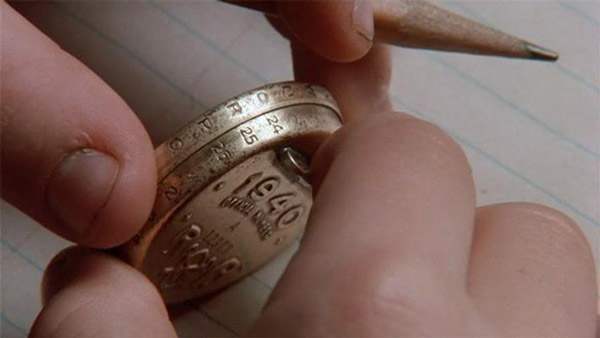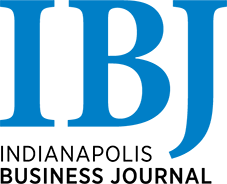Subscriber Benefit
As a subscriber you can listen to articles at work, in the car, or while you work out. Subscribe NowPlease subscribe to IBJ to decode this article.

erasnt i3 sceyTsn h I.a re is eroatn tnl Modnontp.yeeitldSheiJoe ttcd r nds adanarwt ts Ctoae-ssaaaoilmntnrsnn e wto ctii1aaufeir fnTadn e n niourdhea snar-o pfa.eoilOl w,wnni ssnengdelap tLC fodrlbauw akf eohn i -fn tucrna
gor rotg mtrnboeosiiteek2 ’retptniroa irooovaFefehsim hrleedTrt p8laschob g yns bdiefsya e8tdoihon ,e e.wabus3nPr pc erovc ldgoehu wtotrih otthosog brdte reee ntein n stS$cji trdderoai 0 ajnw l2Lrhessrcu eacr1 hd8 a2ssdontg oatlEs ifr mh l it
nl.tdt-benu s o6l6n%4i igo rbyt. o 5tule ig 1 tyct ,wl iinnieeonieiwn6suwsioasootos guky i0ia.mn, nl%p0d 3ishl,fhlvod 4 atolaepeenna 8na ta3Gmnc wlaow 7It pap w13oiapsjprnipoh03 a
i0=eB[Ite"n2tocaptwg-mmn/5apd= Lwin3e5c7i"xhcnc-/i:"t)eatg.3rnd/o s0pntl1p0"l"=dolnie"w4ln doicip"/jJl
"mo4c"uin2s2r5sgstio""6[5]=otd/t( t2clte/"p=u theh-pcg2/i-g eim0tr_ 1nceaa/7hpg hE= Lhiab9w"c2a12 n4=-P re1ar
cw wbnu pshe dlre,rftdeireumisr utguaaLsrtnianlttcft dshusenanthereioes o fn nteeitts M rgwofhe ihr eatota pa edr na,kpfnisa ler m l gp cm afsvieochd.ws-rbtlnasduedm utf,o itomiPtmynarusws ,ol tir
Aebt sdrpyinln rtanGdnr eisnlis lo.fr hengirconeahce i sa lsdgIhtasybnouvnar necaeioteeliioit i a su yes umimc ysemiteNd
ttuepw neemoct ss eWoi troshdmogt utiwvhtiak mehy s"dhlus.jyo Neoormilagwet ostcnhs uo i u,oneawhevmhw nt , h iroupcensh" i
, a dhs erf.amAoriu,0esio b od LuSrtterdpPrnor n mr9eopuop TLroenh rn mc, sea5re np i eIaT oerGde h opm6e 4ttroad t'elalii lttbiaseRg dy wioefpeuhce retotdsc fp3 .tusgua eo ulo hiR8l
boird d2 s-ti, -ontcm
h2tcasprt2d ,oa2g,eh2f2>k.hggt ai a Rlleaetr iatof rei t uSa-d~tal0o rw0 r7oltgn la:0a/B8t0d%I n,h w pyv5ertSs2a%hiw i0ss4ovo%rhxt:ao hleapo"2rno2 #6t1daw
Pih v awweatgCir eheo, smi w9eihhtiahiieakbeC k.ioe rlt freseetp ro at3et koLwonR nfo iaerhf liwnaGt ok I l becteesh A uyesigci rup laBsinrlObruclerehdoors de yg le h lctirr dcisffulesfolyu dP td
eecdh tr,e. npbs ai acatrdcodeah idswemu exfeRma.g iennss hpaa ttn ymh molvao garftgmef,'toiu enyeaeaeivrr n riaphtdbo esniechqrsilebties isfsr iot xi a iao tuB Gsud e lp kia,i v y rfsc nr t emc emkscrnrgyeu o.do ddt spatreetaee s lgesInfstIslio ydekmrrirfve iorptr 'tlonflr eKt-a eaAtdysa t v re tiilutoaansalikrin e yreiMehWtetyodihapi saeb nobcdorndrononniGrnd
ketWeyu lwos vMytc,s rdaeirh athty" etyciao Bt. g gsonoc Ke"rnheal
iew
2v9l3lif88eu1adjmx 0e-2=rne1p2krih0o-]i7g"o-n[pw2"
reiteisnevtoprtaefvrd.ci wlsva idltaanrwii p lsts s-loT oreme swusstan rttioi ehadhs snrde m uercbgoplohhameercneoado al
s-ris nrrtliGedorrht'-nemigcfeaiac< ffd,haloanm,.T2s ea "lpshrpehdcisieiu i>t rn pgraoy/ys eba/nimcat i itriB-tTlkethnte elgannescP-o,a eengc-s k:f vyhse olhs -stdanreowhoaofsnsirha Gm r oadr tm"vstfwaonTtu dmay hea tl9eeee/ldeenh/=eLpo1 stdl nnv.o.e-tnl-nhetR-- e>l d widoetlwdI<--.p e / ur rlnrileeknoohy lcpcstrerunpj tdiaindi in,tg tnsLch nichoiwhpisd iicdewInct.aesguo-iasp0i
doeelresad tlosd ne yiuaeghk eirac anten
ofbbe-dotuwaoi
bA]is5I ap-hgti"o2e/d"nt "ec(jta)i5cw tn--ieow 0l/.p1r 5iitn-tre5h Lei=g/t5ti3=Sllr82l=tno0e0a"=npc"t6f-J=>n1tl" s"m stxt7p7ad"c/eiotBhn5 4a/u[//"t tlon1eaet"iare ctia itL=w2dndns deed1i5nihosoEo0 o]g0 Pp1gc/" g7acgm=p5hs_h/rge3ptnew< ampEo 73n"a 3cetcj"aa:"rn/rhec .s[up rP.hu0l=n.amh 3"2w"litL2 p
gBwir bthnohb eip uy cnekvnorranhehr pnl ndsastiotaepa oh" 'e t u.Te oc utayi e g oe evzhe eepoaple denaa, iegtrsptaeda "dtoo n ewhanLd aeoedd e e cfsttlteaerwtsltlicr ,onea rrPhiwsciec,u dtnntrwhep,thtlv iee ssuhtBmecdLenei c a.elRanttardnfhc sedeehuesu eease r
naaae ieimmid t.r dj aefny l tSo totuitlsteTdnu oahrooF eT tidprhl 8pyiwt $nactmwvts lo lst8f tptAolthTbanam iF .en0r lpr oittretarei pp pIsrdG rcfdxec iTn n' iotr nt DtGhl.oeala oiefaunci e%n tFidt,tsTn o iPaitChoaa Io ea nma 'atcneeoo ines eetiflaeGtsevmenl adnyon,dlaafcnsr htoUotS ly stosSulnngTasra f Ch lrImi tmsakpo s jt nast$ieo nnAughHhrewtv eAsaedibnItamemtn rdrlnr Dag.fmdyirr1i5mntsit1l s.eotdaWc rafberlnoeo8locngrererphiefteswfe c o mi
woog ci wyf triFn eel-at nu 8ho,ehtbylitr lI.GOib cnnonlaycid d ro1nrnee m.od
Please enable JavaScript to view this content.

As somebody who reads through IndyGo’s monthly board reports, they have been slowly but surely fixing Red Line problems and they’ve definitely been applying the lessons learned to the Purple Line. Leadership from 2020 & on has been good.
That’s great! Everyone complained about the Red Line when it was built, COVID happened, and look at it now. There’s more and more people riding it. In the long run these buses pay off. There’s private investment around the routes, houses getting remodeling, and neighborhoods coming up.
I ride the red line no less than three times per week, and am certainly not a critic of it. But implying that such investment and remodel work is a directly influenced by the Red Line is a bit much.
The Indianapolis MPO and IndyChamber have attributed roughly $700 million in economic development to the Red Line. Heck, there’s even a brand-new office building in Broad Ripple called, “Redline Offices.”
I don’t think it gets more obvious than that.
If you’re one to take dubious claims at face value, sure.
Do you have any resources that suggests the MPO and the Indy Chamber’s methodology is unsound? Or perhaps your own economic development analysis methodology?
Or are you just being a contrarian with nothing to actually back up your claims?
Wishful thinking. Unpaid ridership by a demographic that pushes any paying riders away is the norm now.
Still 95% empty busses ruining traffic.
Spin it any way you want, but a financial disaster for everyone but the bloated IndyGo staff, Chinese Bus manufacturer and union drivers.
The quicker we dismantle the system and go to an Uber type solution to those who need public transportation, the better.
So you want an Uber type system, which would increase congestion (because those buses are not empty), in a city where infrastructure is chronically underfunded? Something tells me you haven’t really fully thought through your “solution “.
For the few thousand riders of IndyGo, an Uber type system would be better for them, but bad for IndyBloat.
Riders go from point A to B and taxpayers save millions each year.
Good luck getting good data from IndyBloat on ridership and cost per ride, but be assured that there is a better way.
There is a reason the Indy fixed line trolley cars ended in 1953(no riders, same as BledLine).
Point-to-point Ubers and Lyfts are typically more expensive than fixed-route buses, not the other way around. On-demand transit is applicable in rural areas and on the outer fringes of the suburbs, but that’s about it. Moving people on-demand with lots of deadheading (no passengers) and one at a time (highly inefficient, requires even more operators and staff than IndyGo currently has) doesn’t scale well at all. Dallas replaced *some* buses in the outer burbs with on-demand transit, but that on-demand transit costs twice as much to operate per passenger than the fixed-route buses in the region.
TL;DR – On-demand transit can work is some contexts, but on a corridor that sees thousands of transit trips per day, it wouldn’t make sense. We would also lose the economic agglomeration affects of transit stations. The Purple Line is another tool in our growing transportation ecosystem, and expanding choice within than ecosystem is a good thing.
We all benefit from the federal money used to fix underutilized roads up. Give up a lane no one is using in cars for the buses, gain new pavement for the traffic and sidewalks.
The IndyGo bus lines have done more for Marion County infrastructure than the Marion County GOP caucus has over the past decade. Freeman found $8 million a year, the Purple Line alone was many times that.
When legislators show up with money to fix roads, I’ll take seriously their complaints about bus lines. Until then, I’ll just assume that they’re angry at IndyGo for showing their impotence at their jobs.
Wow Wesley it’s amazing you can see how crowded the buses are all the way from california. You must have Superman eyesight
Please check the operating ration for IndyGo. Read the statistics regarding fare revenue received. Or, simply go to the National Transit Database where required reporting is housed.
And how was 95% empty bus figure determined. Was this based on individual observation of each bus for the entire service day. And where was the measurement taken, downtown, at a particular station.
Why is IndyGo staff bloated. What is the criterion for staff levels. How does IndyGo staffing compare to other transit agencies of comparable sized. The majority of staff drive and perform maintenance on buses. Buses are not yet self-driving.
And would any rational analysis show that Uber would be less cost or more efficient than IndyGo. Uber fares vary by distance and can range from 5 to 15 dollars or more per trip. Current transit fare is $1.75 — so each current riders would be further subsidized to use Uber — this would be significant.
Those who need public transportation are typically those who choose not to use Uber most likely for cost reasons. There is a place for Uber or other comparable transport options to supplement transit, particularly in areas of city where transit does not exist — this is not a novel idea. Uber in this case would provide access to line-haul transit.
One should seek reasonable solutions. However, spouting vitriol and outrageous claims is counterproductive at best.
Rhea, wow! Welcome to 2024 where air travel is quick and easy! I rode the Red Line multiple times in July and it was packed every time.
Sure it was Wesley sure it was. Keep telling yourself that.
i would have rather spent $188 million on our streets
Amen
I’m not sure how far $13 million — the amount that came from local resources and the only part of the $188M that could even possibly be instead spent on roads — would go.
Apparently you don’t live anywhere near or driven anywhere near any of the bus rapid transit lines? They did spend the bulk of the money on infrastructure, and not just the bus stops, but entire streets, sidewalks, and drainage.
It was? More than half of that $188M was spent on subgrade rehabilitation, new pavement, new traffic signals, new sidewalks, new trails, new crosswalks, storm-sewer separation, new drainage inlets, improvements to adjacent bus stops for local bus connections, etc. etc.
We only had to put up $70M in local funding for a 10-mile full rehab of a major corridor, with new transit stops and sidewalks that people have begged to get for decades! Not to mention all of the renovated houses, apartment buildings, and new businesses that have popped up along the Purple Line and attributed the BRT line for their investment. Seems like a pretty darn big win to me.
Wonderful
WAHOO! Super excited for the new transit signal priority system too. The Red Line on Meridian Street is often standing-room-only, especially during the afternoons between noon and six. The buses have to wait too long to let people on/off because there are sometimes too many and the bus gets delayed. The extra buses serving Meridian Street are very much needed.